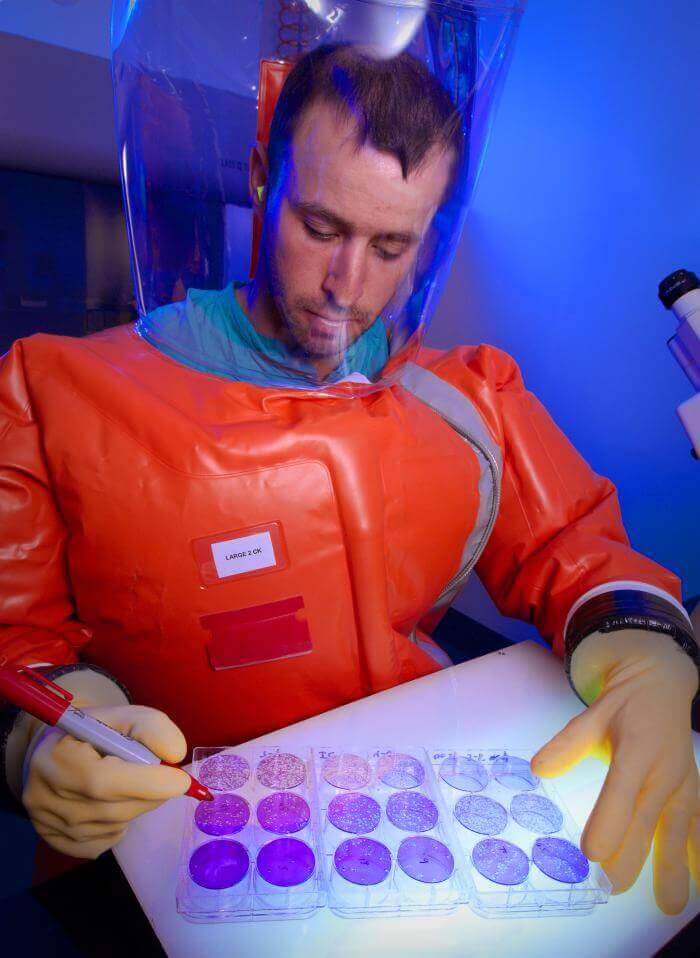Kat KelleyGHTC
Kat Kelly is a senior program assistant at GHTC who supports GHTC's communications and member engagement activities.
Dr. Robert Gallo co-discovered the HIV virus and subsequently led the development of the first HIV and AIDS blood test. Now, his team at the University of Maryland School of Medicine is initiating human clinical trials of an experimental HIV and AIDS vaccine that aims to prevent the virus from attaching to immune cells. The HIV virus uses a protein on its surface—gp120—to bind onto one part of human immune cells—the CD4 receptor—and then subsequently bind onto a second part of the cell—CCR5. This vaccine candidate interrupts this process by preventing the HIV virus from attaching to CCR5, therefore disrupting the process of infection. While many vaccines target specific viral strains, this candidate is intended to neutralize all strains of the HIV-1 virus. The first phase of the trial will enroll 60 healthy, adult volunteers to determine the vaccine’s safety and to ascertain if it successfully triggers an immune response.
A 23-year-old engineer has developed an inflatable incubator that is designed to be easy to transport, use, and maintain, which could dramatically reduce deaths of premature babies in refugee camps. Developer Briton James Roberts has created electronic and functional prototypes which indicate that the incubator, known as MOM, will provide the required warm, stable, and sterile environment. Roberts designed the product with Syrian refugee camps in mind, as an estimated three-fourths of premature infant deaths in camps could be prevented with proper incubation. The incubator can be collapsed (see Figure 1) to fit in care packages commonly distributed in refugee camps and while it does require electricity, it can run off of a car battery or solar power. Roberts recently won two cash prizes to support product development and manufacturing but is continuing to fundraise to support the costly process of regulatory approval for medical devices. Roberts believes the product could be ready for market by 2018.

The US Department of Defense (DoD) and National Institutes of Health (NIH) have both supported the research and development (R&D) of drugs and vaccines for Ebola since the early 2000s. In both agencies, budget constraints halted progress despite promising clinical trials. In 2004, a researcher at army installation Fort Detrick was exposed to Ebola, prompting the DoD to partner with pharmaceutical company Sarepta Therapeutics to rapidly develop an experimental treatment for Ebola. The treatment was given emergency approval by the US Food and Drug Administration (FDA), but the researcher did not become infected and the treatment remained unused. In 2010, the DoD awarded Sarepta a US$291 million contract to continue its work. Sarepta’s drug demonstrated 60 to 80 percent efficacy in clinical trials with primates and proved safe for use in phase 1 human clinical trials. In September 2012, the FDA granted Sarepta’s drug fast-track status—to expedite its regulatory review—but just one month later, the DoD discontinued the project, in light of looming budget cuts that seemed inevitable due to congressional gridlock. In mid-2014, after the onset of the Ebola epidemic in West Africa, Sarepta CEO Chris Garabedian approached the DoD about the possibility of continuing their work, however, the agency chose to fund products that were not as far along as Sarepta’s. While the DoD has since reconsidered—inviting Sarepta to apply for funding for phase II trials—Sarepta declined, and under new leadership, has terminated their Ebola R&D.
The US Department of Agriculture (USDA) has contracted two veterinary pharmaceutical companies—Harrisvaccines and Ceva Santé Animale—to manufacture, store, and ship vaccines to prevent the strain of avian influenza which caused an outbreak and consequent shortage of eggs and turkey in the United States earlier this year. The contract requires the companies to store the vaccines for up to five years, regularly testing them for quality assurance, and will ship them within ten days to anywhere in the United States if requested by the USDA National Veterinary Stockpile. To improve clarity and expediency of communication—for which the agency was criticized by veterinary, poultry, and egg groups during this year’s outbreak—the USDA has also worked with Iowa State University to translate avian influenza–related biosecurity materials for Spanish-speaking farm workers.